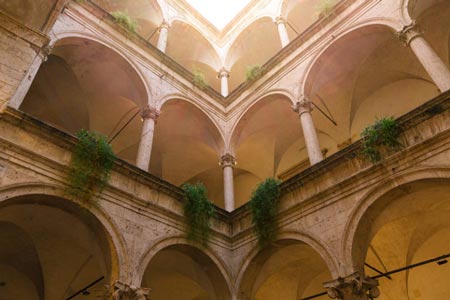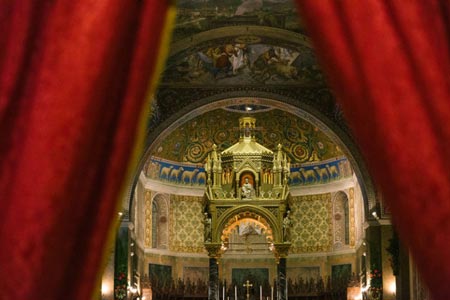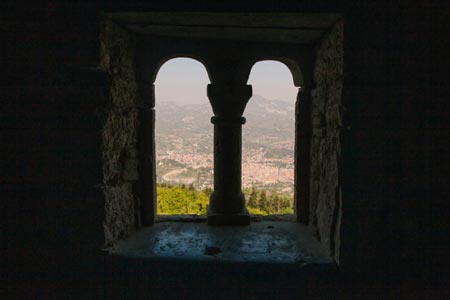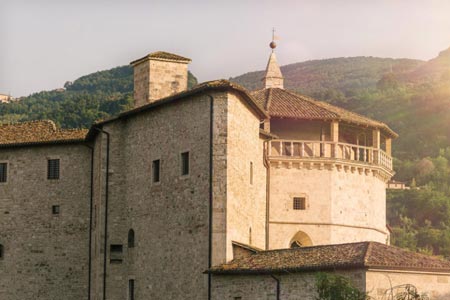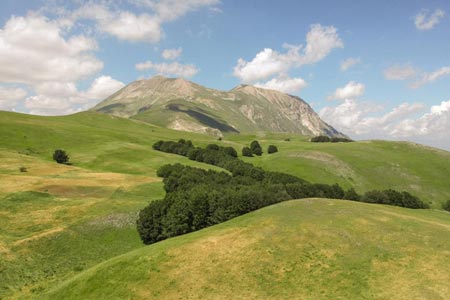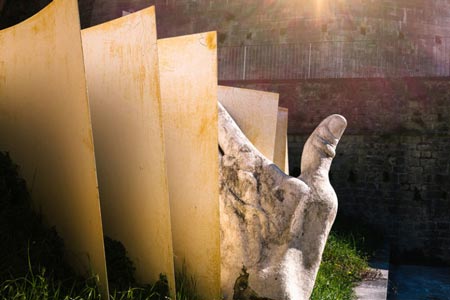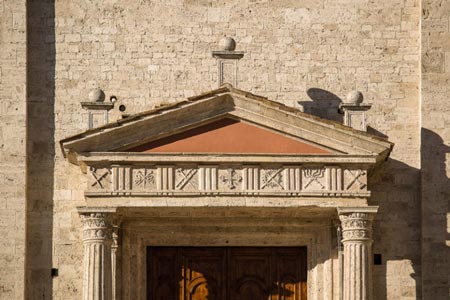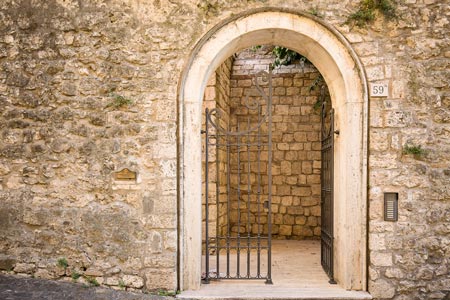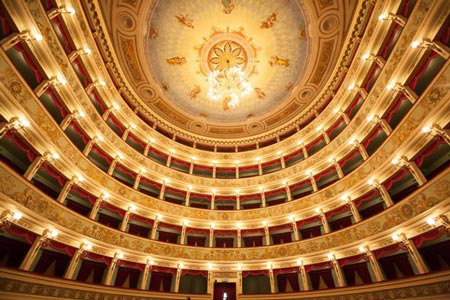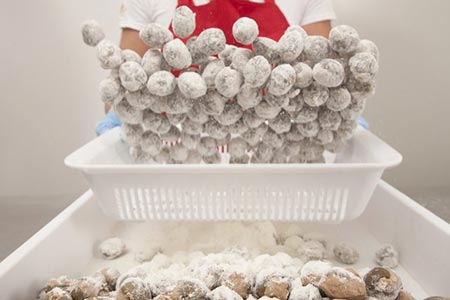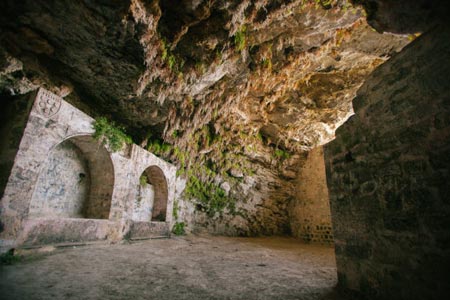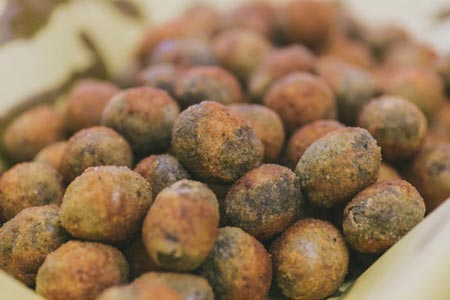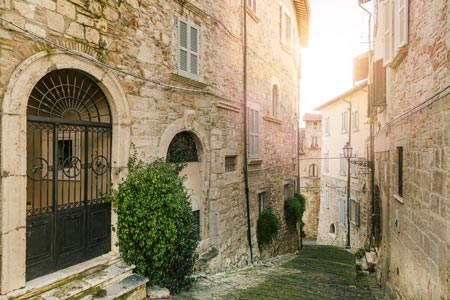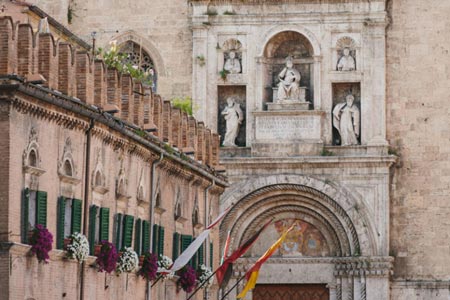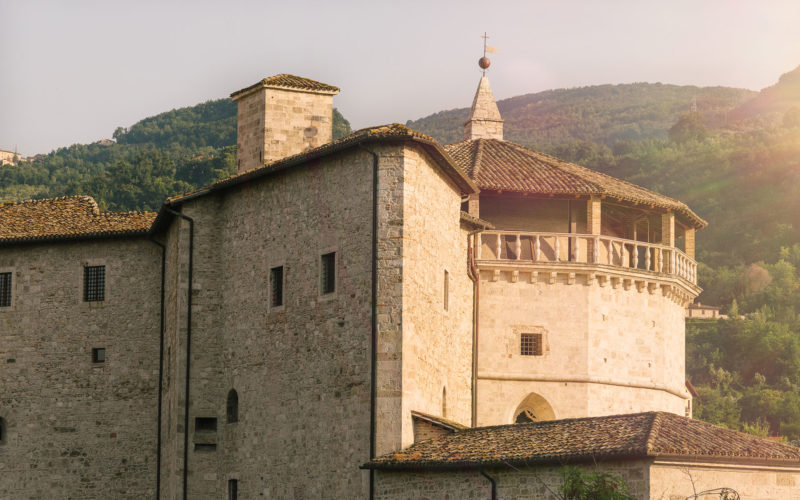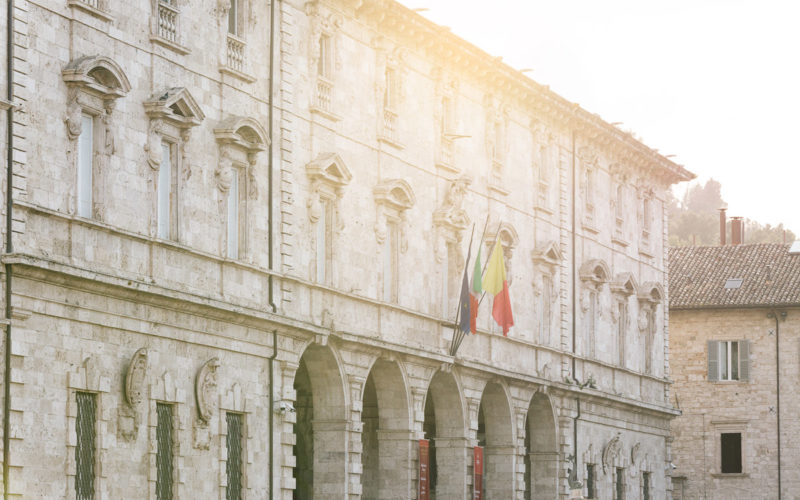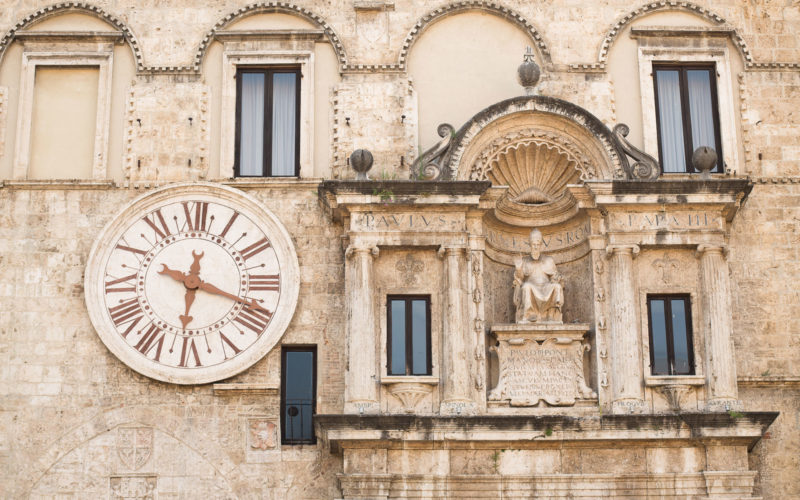A dive back to the yesteryears! Via Pretoriana
Via Pretoriana is the ancient road that crosses the historic center of Ascoli Piceno and climbs towards the ancient “Capitolium“: it is the extreme extension of what is commonly considered the “Cardo Maximus” (the ancient road of the Augustan age).
Retracing the ancient city arterial road is like a journey back in history. Thanks to the unusual suggestion of the Rue’s views and the elevated passages that alternate with the various buildings flanking the street, the trouble for the steep walk finally ends. The typical craft shops are in the same premises that in the past attracted the curious mountaineers coming from the remote villages of Valle Castellana, with mules loaded with goods.
The splendid view starts from the imposing building on the right, which shows an incomplete eighteenth-century facade overlapped with medieval buildings. Here, the two monumental ashlar portals correspond to windows with a broken tympanum and the elegant corner balcony supported by elaborate travertine corbels.
Continuing on the right, past the arch of the Rua named after the sculptor and goldsmith Pietro Vannini, a graceful Gothic mullioned window stands out in Rua Delle Convertite, the only one intact of the many inserted in the modified perspective drawings.
On the opposite side, between Rua del Ponte Oscuro and the suggestive Rua dell’Arco, a small building, with two fourteenth-century portals “ad arco falcato” (full-round arches encircled in pointed arches), shows the upper floor windows with Guelph frames, formerly divided by small pillars placed in correspondence with the stone shelves with leonine protomes of the window sills.
Going further on, at number 45, we notice the significant Renaissance facade coming from a demolished building formerly located in Via Buonaccorsi, with eloquent inscriptions on the architraves of the three portals.
On the left, a steep ramp leads to the former Convent with Cloister and Church of San Domenico, in the past rich in polyptychs by Carlo and Vittore Crivelli.
There is a building with an ashlar portal dominated by an elegant arcade of the late sixteenth century in the middle of the ramp. This building belonged to the Olivetan monks, who founded there a majolica factory in the eighteenth century. Later, the famous family of Ascoli organ builders and majolica makers took over the factory. It was the same family from which famous ceramic sculptors such as Giorgio Paci came.
Continuing to ascent via Pretoriana, we finally reach the intersection via Betuzio Barro, where the base of one of the noblest towers in the area stands in perfect view.
CONDIVIDI I TUOI SCATTI CON GLI HASHTAG: #visitascoli #ascolipiceno2024 #ascolinedita
AUTHOR: Prof. Giorgio Giorgi, art historian
